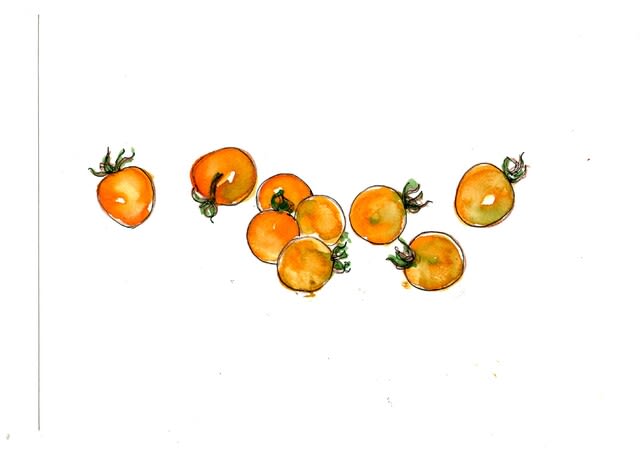
今日の「 お気に入り 」は 、ノンフィクション作家 ビル・ブライソンさん の
著書 " The Body ― A Guide for Occupants " からの 抜き書き 。
” All animals seem to sleep. Even quite simple creatures like nematodes
and fruit flies have periods of quiescence. The amount of sleep needed
varies markedly among animals. Elephants and horses get by on just
two or three hours a night. Why they need so little is unknown. Most
other mammals require a great deal more. The animal that used to be
thought the mammalian sleep champion, the three-toed sloth, is
still often said to sleep for up to twenty hours a day, but that number
came from studying captive sloths, who have no predators and not a
lot to do. Wild sloths slumber for more like ten hours a day ー not a
huge amount more than we do. Extraordinarily, some birds and marine
mammals are able to switch off one half of their brain at a time, so that
one half remains alert while the other is snoozing. ”
” In 1999, after ten years of careful work, a researcher at Imperial College
in London named Russell Foster proved something that seemed so
unlikely that most people refused to believe it. Foster found that our
eyes contain a third photoreceptor cell type in addition to the well-known
rods and cones. These additional receptors, known as photosensitive
retinal ganglion cells, have nothing to do with vision but exist simply
to detect brightness — to know when it is daytime and when night. They
pass this information on to two tiny bundles of neurons within the brain,
roughly the size of a pinhead, embedded in the hypothalamus and known
as suprachiasmatic nuclei. These two bundles ( one in each hemisphere )
control our circadian rhythms. They are the body's alarm clocks. They tell
us when to rise and shine and when to call it a day. ”
” Since Foster's discovery, scientists have found that we have body clocks
not just in the brain but all over ― in our pancreas, liver, heart, kidneys,
fatty tissue, muscle, virtually everywhere ― and these operate to their
own timetables, dictating when hormones are released or organs are
busiest or most relaxed. Your reflexes, for instance, are at the sharpest
in mid-afternoon, while blood pressure peaks toward evening. Men tend
to pump more testosterone early in the morning than later in the day. If
any of these systems get too out of sync, problems can result. Disturbances
to the daily rhythms of the body are thought to contribute to ( and in some
cases may directly account for ) diabetes, heart disease, depression, and
serious weight gain.
The suprachiasmatic nuclei work closely with a nearby and long
mysterious pea-sized structure, the pineal gland, which is more or less
in the middle of the head. Because of its central location and its solitary
nature — most structures in the brain come in pairs, but the pineal
stands alone — the philosopher Rene Descartes concluded that the
pineal is where the soul resides. Its actual function, to produce melatonin,
a hormone that helps the brain track day length, wasn't discovered until
the 1950s, making it the last of the main endocrine glands to be decoded.
How exactly melatonin relates to sleep is still not understood. Melatonin
levels within us rise as evening falls and peak in the middle of the night,
so it would seem logical to associate them with drowsiness, but in fact
melatonin production also rises at night in nocturnal animals when they
are most active, so it is not promoting sleepiness. The pineal, in any case,
tracks not just day/night rhythms but also seasonal changes, which are
really important for animals that hibernate or breed seasonally. They are
consequential for humans, too, but in ways that we mostly don't notice.
Your hair grows faster in the summertime, for instance.
As David Bainbridge has neatly put it, " The pineal is not our soul,
it is our calendar. " But it is also a very curious fact that several of our
fellow mammals — elephants and dugongs to name just two — don't
have pineals and don't seem to suffer for it. ”
” The suprachiasmatic nuclei don't entirely account for why we get sleepy
and want to go to bed. We are also subject to natural sleep pressure
— a profound and eventually irresistible urge to nod off — governed by
something called sleep homeostats. The pressure to sleep grows more
intense the longer we stay awake. This is in large part a consequence
of an accumulation of chemicals in the brain as the day goes by, in
particular one called adenosine, which is a by-product of the output of
ATP ( or adenosine triphosphate ) , the little molecule of intense energy
that powers our cells. The more adenosine you accumulate, the drowsier
you feel. Caffeine slightly counteracts its effects, which is why a cup of
coffee perks you up. Normally, the two systems operate in synchronicity,
but occasionally they deviate, as when we cross several time zones
on a long-distance plane flight and we experience jet lag. ”
( 出典 :Bill Bryson 著 " The Body ― A Guide for Occupants " .
Knopf Doubleday Publishing Group. 刊 )
上掲の英語の文章は 、翻訳本の中で 、次のように 日本語訳されています 。
「 あらゆる動物は眠るらしい。線虫やショウジョウバエのようなごく単純な
生物でさえ 、一定のあいだ静止する 。必要な睡眠時間は動物によって大
きなばらつきがある 。ゾウとウマは一晩に二、三時間だけで生きていける 。
なぜそんなに少なくて済むのかはわからない 。ほかの哺乳類のほとんどは 、
ずっと長い睡眠を必要とする 。哺乳類の眠りの王者と考えられていた動物 、
ミツユビナマケモノは 、今でもよく一日に最長で二十時間眠ると言われるが 、
それは捕獲されたナマケモノから得た数字で 、周囲に捕食動物がいないうえ
に 、やることがあまりなかったからだろう 。野生のナマケモノの睡眠時間は
一日に十時間程度で 、ヒトよりずっと多いわけでもない 。なんとも不思議な
ことに 、鳥と海洋哺乳類の中には 、一時的に脳の半分のスイッチを切って
おけるものもいる 。半分は警戒を続け 、もう半分はうたた寝できるという
わけだ 。」
「 1999年 、インペリアル・カレッジ・ロンドンの研究者ラッセル・フォ
スターは 、十年の綿密な研究のあと 、あまりにも意外でほとんど誰も信じ
ようとしなかった ことを証明した 。ヒトの目に 、周知の杆体と錐体に加え
て 、第三の光受容細胞があることを発見したのだ 。感光性網膜神経節細胞
と呼ばれるこの新たな受容体は 、視覚とは関係なく 、明るさを感知するた
め 、つまり昼か夜かを知るためだけに存在する 。その情報は 、脳内の視床
下部に埋め込まれたピンの頭ほどの小さなふたつの束になったニューロンに
伝えられる 。『 視交叉上核 ( しこうさじょうかく ) 』と呼ばれるこのふた
つの束 ( 各半球にひとつずつ ) が 、概日 ( がいじつ ) リズムを制御している 。
つまり 、体内時計だ 。いつ起床して 、いつ仕事を切り上げればいいかを教
えてくれる 。」
「 フォスターの発見以来 、体内時計は脳だけではなく 、全身 ― 膵臓 、肝臓 、
心臓 、腎臓 、脂肪組織 、筋肉 、ほぼあらゆる部分 ― にあり 、それらは
独自の時刻表に従って働き 、いつホルモンを放出するかや 、いつ器官が最も
忙しく働き 、最も弛緩するかを指示していることがわかってきた 。たとえば 、
反射神経は午後半ばに最も鋭敏になり 、血圧は夕方にかけて頂点に達する 。
男性は 、一日の後半よりも朝早くに多くのテストステロンを分泌する 。
こういうシステムのどれかがうまく同期しなくなると 、問題が起こる 。体の
概日リズムの乱れは 、糖尿病や心臓病 、うつ病 、深刻な体重増加の一因と
なる ( 場合によっては直接の原因となる ) と考えられている 。
視交叉上核は 、久しく謎に包まれている近くの豆粒大の構造物 、松果体
と密接に連携して働く 。松果体は 、ほぼ頭の真ん中にある 。その中心的な
位置と 、周囲から孤立した独自のありかた ― 脳内のほとんどの構造物は対
になっているが 、松果体はひとつしかない ― から 、哲学者のルネ・デカル
トは 、松果体こそが魂の宿る場所だという結論を導き出した 。実際には 、
脳が一日の長さを把握するのをメラトニンというホルモンを産生する機能を
つかさどっているのだが 、それは1950年代にようやく発見され 、解明
された主要な内分泌腺の最後のひとつになった 。メラトニンが具体的にどの
ように睡眠に関連しているのかは 、まだよくわかっていない 。メラトニン
の分泌量は夕方になると増えて真夜中に最大になるので 、眠気と結びつける
のは論理的に思えるが、実のところメラトニンの産生は 、夜に最も活動
的になる夜行性動物でも増えるから 、眠気を促進するわけではない 。それは
ともかく 、松果体は昼夜のリズムだけではなく 、季節の変化も把握する 。
冬眠動物や季節繁殖動物にとっては 、とても重要だ 。ヒトにも大きな影響を
及ぼしているが 、たいていは気づきにくい形で現われる 。たとえば 、体毛
は夏季のほうが早く伸びる 。デイヴィッド・ベインブリッジがうまいことを
言っている 。『 松果体はわたしたちの魂ではなく 、わたしたちのカレンダー
だ 』。しかし 、これまたとても興味深いことに 、哺乳類仲間のいくつか —
たとえばゾウやジュゴンなど ― には松果体がなく 、それで困っているよう
にも見えない 。」
「 わたしたちが眠くなったり 、寝床に入りたくなったりするのは 、視交叉上核
のせいばかりではない 。睡眠恒常性と呼ばれるものがつかさどる自然な睡
眠圧 ― うとうとせずにはいられない強い衝動 — にも支配されている 。起き
ている時間が長くなるほど 、睡眠への圧力は高まる 。これはおもに 、一日が
過ぎるにつれて 、脳に化学物質が蓄積していくからだ 。具体的には 、細胞の
動力源となる強いエネルギーを持つ小さな分子 、アデノシン三リン酸 ( ATP )
放出の副産物であるアデノシンが挙げられる 。アデノシンが蓄積していくほど 、
強い眠気を感じるようになる 。カフェインはその効果をわずかだが抑えるので 、
コーヒーを一杯飲むと元気になるわけだ 。通常 、視交叉上核と睡眠圧のふたつ
のシステムは同時に働いているが 、ときどきずれることがある 。たとえば 、
飛行機の長距離フライトでいくつかの時間帯を超え 、時差ボケになったとき
などだ 。」
( 出典 : ビル・ブライソン著 桐谷知未訳 「 人体大全 ― なぜ生まれ 、
死ぬその日まで無意識に動き続けられるのか ― 」新潮社 刊 )
原書および翻訳本からの引用はここまで 。
Nothing to add.
Do little and think a lot.




























※コメント投稿者のブログIDはブログ作成者のみに通知されます